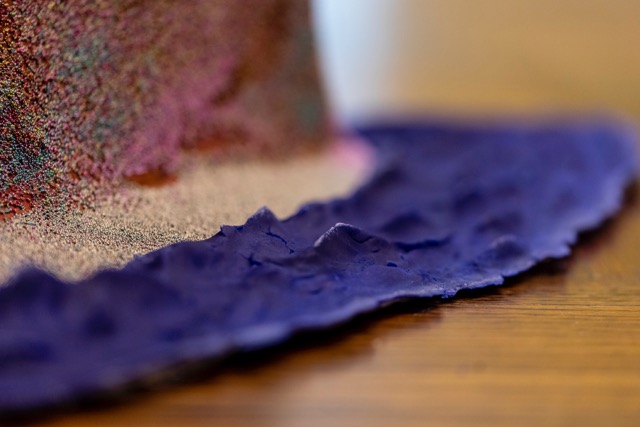Mike Diaz Morimoto (b. 1991, USA)
Predator, 2019
Microbeads, Fiberglass and molding clay
2.5’ L x 2.5’ H x 9†W
Over the course of history beauty has always been appreciated and valued by societies. People will go through great lengths to maintain an appearance that they see as beautiful. Cosmetic beauty products are a big part of these beautification practices. But like most beautiful things, there can be ugly truths beneath. That ugly truth is Microbeads. Microbeads can be found in many cosmetic products from toothpaste and exfoliating face cleansers to decorative nail accessories. These tiny plastic terrors are a dangerous plastic predator of the ocean as they are often mistaken as a food source for many ocean animals that prey on micro-organisms. Where a plastic bag would take 1000 years to break down in the environment, microbeads take 10,000 years due to their small size. Although microbeads can be hard to see in the sea, their impact on our ocean is not.
The ocean has always been close to my heart. Growing up, one of the events I looked forward to each year was when my family would spend a weekend in the costal town of Capitola, CA. Every year of my life I grew more and more in love with the ocean and its creatures that marine biology became a big passion in my life. Especially Sharks due to my hometown hockey team, the San Jose Sharks. But, as my love for the ocean grew so did the news of plastic pollution and the disasters that ocean life has encountered due to the impact of the plastic predators infesting our marine environments.
Predator gives a form to these small but deadly micro monsters. Like a shark, they are not easy to see when they strike. They remain unseen and slowly make their presence known. The warring of the fin rising from the depts is often less a warning of things to come and more often a sign that it is too late.
